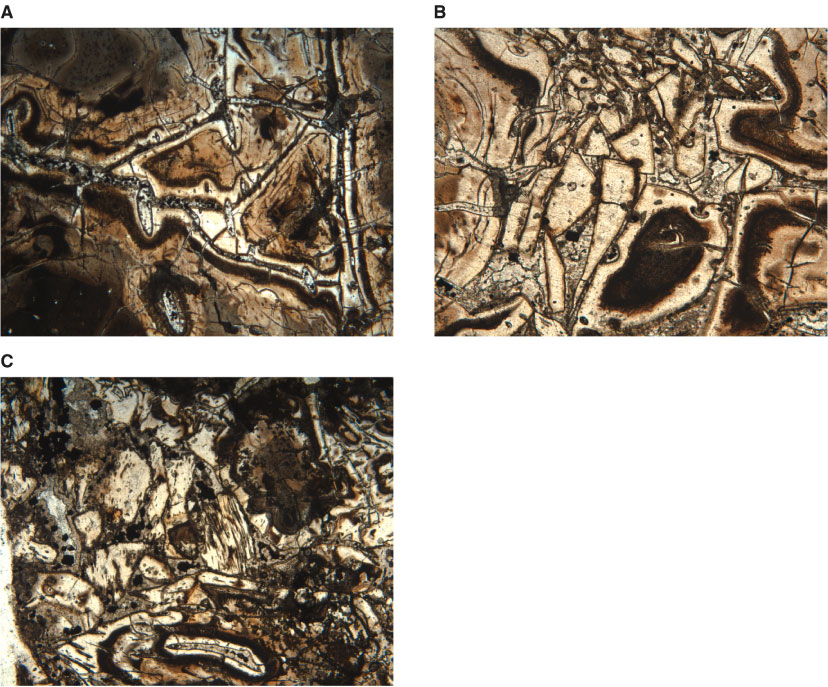Figure F18. Thin sections of various vitriclastic textures in one sample of Unit 8 (interval 193-1188A-9R-1 (Piece 7, 68-70 cm). A. Locally the clasts show jigsaw-fit texture with fractured vesicles continuing on either side of the vein. This arrangement indicates that fracturing during alteration generated these clasts and that relative movement was minimal (in plane-polarized light; width of view = 5.5 mm. Photomicrograph ID# 1188A_44; thin section 9). B. Vitric clasts with locally preserved perlitic cracks are irregularly arranged in this part of the thin section. Therefore, they must have moved relative to each other prior or during hydrothermal activity (in plane-polarized light; width of view = 2.75 mm. Photomicrograph ID# 1188A_45; thin section 9). C. One of the clasts in this area of the thin section shows a laminar texture that could be remnant, elongate tube vesicles. This texture is not continued in the adjacent clasts, which indicates that this clast is out of place (in plane-polarized light; width of view = 5.5 mm. Photomicrograph ID# 1188A_98; thin section 9).

![]()